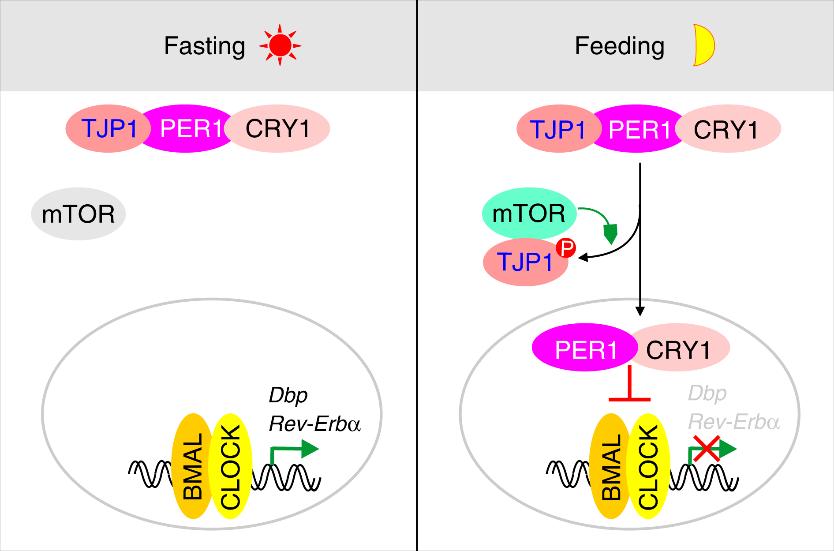What is TJP1 Protein
The TJP1 protein, officially known as Tight Junction Protein 1, is a crucial component of tight junctions, playing a pivotal role in maintaining cell integrity and barrier function. Commonly referred to as ZO-1 (Zonula Occludens-1), TJP1 is a member of the membrane-associated guanylate kinase (MAGUK) family. Its structural characteristics include three PDZ (PSD-95/Discs large/ZO-1) domains, a SH3 (Src homology 3) domain, and a GUK (Guanylate kinase-like) domain, highlighting its diverse functional capabilities.
Recent research has delved into the intricate details of TJP1, shedding light on its involvement in cellular processes beyond tight junction regulation. This multifaceted protein has emerged as a subject of intense investigation, uncovering novel facets of its structural intricacies and functional diversity.
TJP1 Biological Functions and Molecular Mechanisms
TJP1 operates as a scaffolding protein, orchestrating the assembly of tight junctions that seal the intercellular space between adjacent cells. These junctions are critical for the formation of epithelial and endothelial barriers, governing the selective permeability of substances across cell layers. The molecular mechanisms underlying TJP1's function involve its interactions with various proteins, including transmembrane proteins and other tight junction-associated proteins.
Beyond its role in tight junction formation, TJP1 participates in signal transduction pathways, influencing cellular processes such as gene expression, proliferation, and apoptosis. Its ability to connect the cytoskeleton to the cell membrane contributes to the maintenance of cell shape and polarity.

Figure 1. TJP1 couples mTOR signaling to the hepatic circadian clock. (Liu Y, et al., 2020)
TJP1 Related Signaling Pathway
The signaling pathways involving TJP1 are intricate, with the protein acting as a nexus for various cellular cues. Notably, TJP1 is involved in the regulation of the Wnt signaling pathway, which plays a pivotal role in embryonic development and tissue homeostasis. TJP1's interactions with key components of this pathway highlight its influence on cell fate determination and differentiation.
Moreover, TJP1 is implicated in the modulation of the Rho GTPase signaling pathway, influencing cytoskeletal dynamics and cellular motility. These connections underscore TJP1's role in cellular processes extending beyond its classical involvement in tight junction assembly.
TJP1 Related Diseases
Dysregulation of TJP1 has been implicated in several pathological conditions. Diseases characterized by compromised epithelial or endothelial barrier function often involve alterations in TJP1 expression or localization. Inflammatory bowel diseases, celiac disease, and certain types of cancer have been associated with TJP1 dysfunction, emphasizing its clinical significance.
Understanding the molecular basis of TJP1-related diseases provides valuable insights for developing targeted therapeutic interventions aimed at restoring normal protein function and, consequently, cellular homeostasis.
TJP1's Applications in Biomedicine
The unique structural and functional attributes of TJP1 position it as a promising target for biomedical applications. In the realm of diagnostics, TJP1 serves as a potential biomarker for diseases associated with disrupted epithelial barriers. Monitoring its expression levels or localization can offer valuable diagnostic insights and aid in disease prognosis.
Additionally, TJP1 holds promise in vaccine development, as its involvement in cellular processes makes it an intriguing candidate for eliciting immune responses. Harnessing TJP1 as part of vaccine formulations may enhance the efficacy of immunization strategies.
On the therapeutic front, efforts are underway to develop drugs that modulate TJP1 function, aiming to restore normal tight junction assembly in diseases where its dysregulation is prominent. Such targeted therapeutics hold the potential to address the underlying causes of TJP1-related disorders, offering a novel approach to disease management.
Recommended Products
| Cat.# | Product name | Species | Source (Host) | Tag |
|---|---|---|---|---|
| TJP1-240H | Recombinant Human TJP1, GST-tagged | Human | Wheat Germ | GST |
| TJP1-239H | Recombinant Human Tight Junction Protein 1 (Zona Occludens 1) | Human | E.coli | N/A |
| TJP1-384HFL | Recombinant Full Length Human TJP1 Protein, C-Flag-tagged | Human | Mammalian cells | Flag |
| TJP1-1114H | Recombinant Human TJP1 Protein, MYC/DDK-tagged | Human | HEK293 | Myc/DDK |
| TJP1-3189H | Recombinant Human TJP1 Protein (Met1-Val190), His tagged | Human | E.coli | His |
| TJP1-6723H | Recombinant Human TJP1 Protein, Myc/DDK-tagged, C13 and N15-labeled | Human | HEK293T | Myc/DDK |
| TJP1-464H | Recombinant Human TJP1 Protein, His-tagged | Human | E.coli | His |
| TJP1-2197H | Recombinant Human TJP1 Protein, His (Fc)-Avi-tagged | Human | HEK293 | His (Fc)-Avi |
| Tjp1-6440M | Recombinant Mouse Tjp1 Protein, Myc/DDK-tagged | Mouse | HEK293T | Myc/DDK |
| Tjp1-465R | Recombinant Rat Tjp1 Protein, His-tagged | Rat | E.coli | His |
Reference
- Liu Y, et al. The tight junction protein TJP1 regulates the feeding-modulated hepatic circadian clock. Nature Communications. 2020, 11(1): 589.

